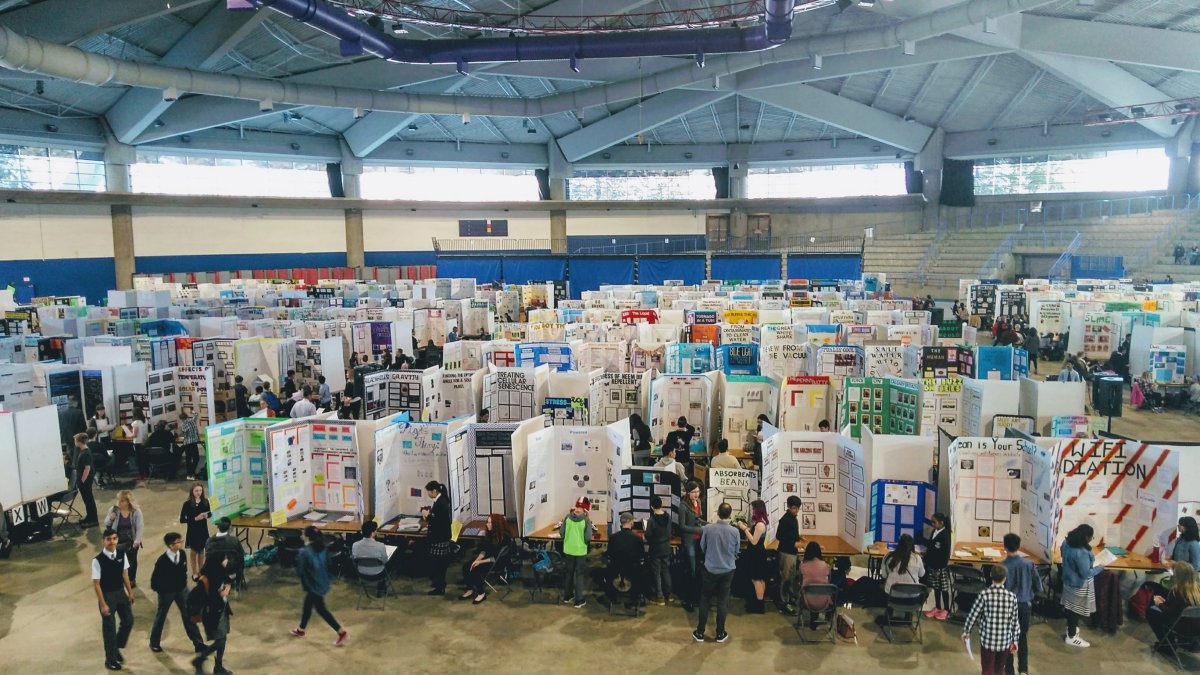Audrey Kavchak is only 13 years old, but the Grade 7 Calgary student has a plan to help save our oceans.

It starts by cutting back on plastic pollution.
“A good solution,” said Kavchak, “would be to make biodegradable plastic from sustainable sources.”
Kavchak developed her own biodegradable plastic from something that already ends up in the landfills — shrimp shells.

“Basically, shrimp shells are made of mainly protein, minerals and chitin. I used chemicals to remove the proteins and minerals and left chitin. This converted to chitosan — which is a more easily dissolvable variant of chitin — with vinegar, and water is used to make bioplastics.
“Long story short, I started with shrimp shells, extracted chitin, made plastic objects and composted them.”
Kavchak had been invited to compete in the Canada-Wide Science Fair (CWSF), hosted virtually in Ottawa on May 17 -21, 2021.
In a normal year, students from across the country would have been flown to the massive science fair to present their research projects in-person.
This year, Kavchak was making her pitch online from her Alberta bedroom.
“It’s still an amazing opportunity.”
Kavchak said her father, who is a chemical engineer by trade, helped supervise when dangerous chemicals were involved, and her mother had always encouraged her to pursue her love of the ocean.
“My mom is always sending me these articles on different species of fish.”
It’s that kind of curiosity that needs to be cultivated at home, said Reni Barlow, executive director of Youth Science Canada, a charity that has been hosting the week-long CWSF since 1962.
Last year was the exception, when it was cancelled due to COVID-19 restrictions.
The mission of Youth Science Canada is to inspire budding young scientists and get other students excited about STEM, science, technology, engineering and mathematics.
“We’re all born curious,” said Barlow.
“It’s really important to encourage that curiosity and to foster it.”
Barlow stressed while more children spend more time at home, they need to learn how to find answers for themselves.
“Encourage kids to be curious, especially as they become teens because in school quite often, the focus shifts to content and giving answers. We want kids to stay curious.”
Another school year of back and forth to online learning has meant hands-on projects in the classroom have been cancelled and interest in STEM has also suffered with fewer students signing up to do projects.
“I think in a way,” said Barlow, “because when education goes into home-schooling mode it tends to be a little bit of a back to the basics.”
For students already inclined to do STEM, Barlow said many have used their extra time at home to independently develop “amazing projects.” To spur interest from entry-level students, the organization launched mySTEMspace to help guide youth through the steps and stages of presenting their ideas.
There’s another challenge that has been on the radar, even before COVID.
Young girls are well represented in STEM at science fairs across the country; the numbers are gender-balanced. It doesn’t stay that way.
- Roll Up To Win? Tim Hortons says $55K boat win email was ‘human error’
- Ontario premier calls cost of gas ‘absolutely disgusting,’ raises price-gouging concerns
- Bird flu risk to humans an ‘enormous concern,’ WHO says. Here’s what to know
- Election interference worse than government admits, rights coalition says
“We do see drop-off,” said Barlow.
“At the elementary and secondary level the numbers are reasonably good, but when you look at post-secondary, there’s some interesting patterns there.”
Barlow said areas like biological sciences and veterinary medicine are dominated by women, but it’s the opposite for computer science and engineering.
That’s why engineers across the country have joined forces to attract more women to a profession that is still vastly outnumbered by men.
Jean Boudreau, president of Engineers Canada, said only about 14 per cent of its licensed members are female.
Part of the reason, she said, has been a lack of role models and stereotypes that have turned young women away from a career in engineering.
“The stereotype of an engineer is a man who builds bridges or buildings or cars and the work is either hard or boring.”
Engineers Canada has launched a recruitment of sorts called 30 by 30. It’s a push to raise the number of female licensed engineers to 30 per cent by 2030.
Boudreau said parents can help by introducing young people to engineers in their community and sharing the wide variety of work they do. She thinks students in Kindergarten should be introduced to hands-on activities that get them excited about STEM.
“Start thinking about it at a young age instead of waiting until they’re in high school or university.”
Barlow called curiosity the root of all of STEM and said an introduction is all around young children.
Instead of pointing out the name of every bird in the backyard, Barlow said it’s more important to watch what the birds are doing and why.
“The most common question with young kids is ‘why?’
“Instead of providing answers… ask them, ‘Well, what do you think?'”
Kavchak said she doesn’t know what to expect at the national science fair but recognized being chosen to compete is a huge achievement in itself.
It’s one she says her parents and little sister have helped support.
Her goal after high school is to continue studying the ocean and how to save fish.
“It’s science, it’s absolutely fascinating.
“I think a big part of pursuing fields like this is surrounding yourself with people who support you and can help get you where you want to go.”



Comments